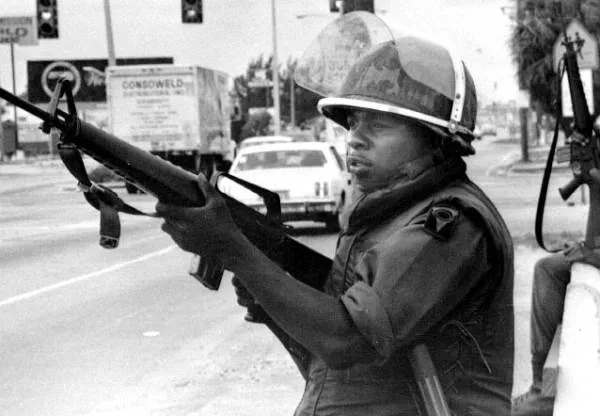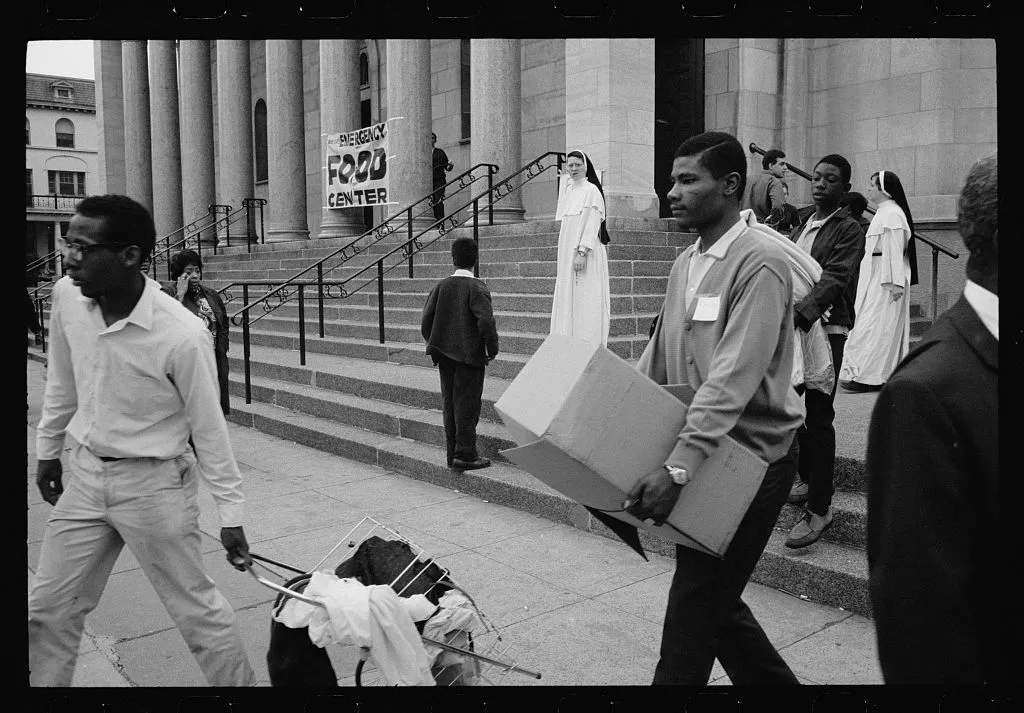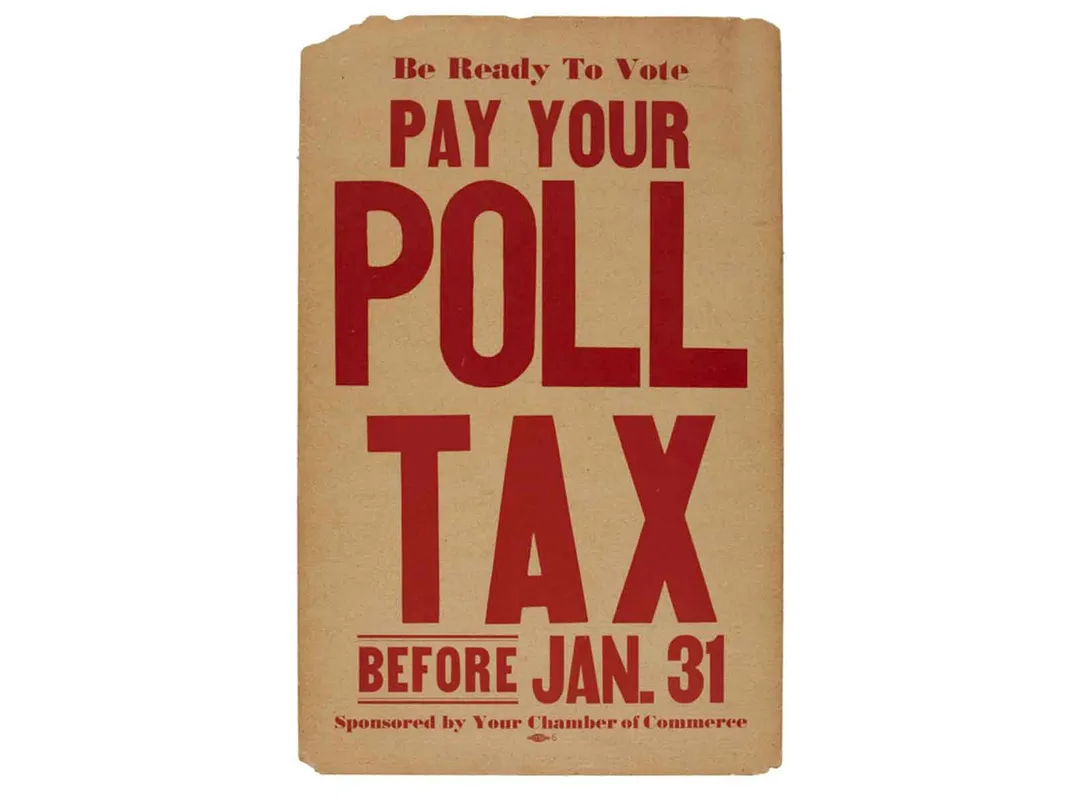The Long, Painful History of Racial Unrest
A lethal incident of police brutality in Miami in 1979 offers just one of countless examples of the reality generations of African Americans have faced
/https://tf-cmsv2-smithsonianmag-media.s3.amazonaws.com/filer/e5/b3/e5b345e8-b85c-4003-a942-47c9c17e1c85/gettyimages-836826058.jpg)
With the murder of George Floyd and the ensuing civil unrest, historians, educators and the general public once again fixated on the “long hot summers” of the 1960s. Where every year, for the latter half of the decade, America was embroiled in widespread violent protest. While this keystone era certainly provides some background for the current historical moment, it is the in-between times which offer greater context to the continuous cycle of oppression, protest and violence in American history.
On December 17, 1979, motorcyclist Arthur McDuffie led officers from the Dade County Public Safety Department on an 80-mile-an-hour chase through the streets of Miami. Eight minutes later, McDuffie, an African American insurance executive, was dead. Immediately doubt grew about how he actually died. While the officers on the scene claimed his death occurred because of an accident, the coroner’s report stated that the fatal injuries were inconsistent with a motorcycle crash. After lying in their initial statement, the officers involved began to confess their roles in McDuffie’s murder and the subsequent cover up. After the victim voluntarily surrendered, his helmet was pulled off and at least four policemen beat McDuffie with their Kel-Lite flashlights, resulting in multiple head wounds, including a 10-inch-long skull fracture. Officers who arrived later to the scene then carved the pavement with a tire iron and ran over the fallen motorcycle with their patrol cars to produce evidence of a crash that did not happen. One officer even threw McDuffie’s watch into the gutter to manufacture the force of impact.
Eleven days later State Attorney Janet Reno filed charges against four officers: Ira Diggs, Michael Watts, William Hanlon and Alex Marrero. Since 1973, these men had amassed 47 citizen complaints and 13 internal probes between them. Citing the heightened racial climate, the trial moved to Tampa where, despite the coroner’s report, eyewitness testimonies, and confessions from the police involved, an all-white, six-person jury acquitted the officers of any wrongdoing on May 17, 1980.
Furious, nearly 5,000 Black residents gathered in downtown Miami to protest yet another incident of race-based injustice. As day turned to night, people expressed their anger and disappointment through acts of property violence, targeting white businesses and the Dade County Department of Public Safety headquarters. Although mainstream leaders and organizations, like Jesse Jackson and the NAACP, pleaded for calm, the violence did not end until Governor Bob Graham called out the Florida National Guard.

By May 20, the streets were quiet once more, leaving 18 people dead, 400 injured, 800 arrested and property damage in excess of $80 million. The cause of death for the 18 represented the chaos and widespread violence; their lives were snuffed out by shots fired from National Guardsmen and security guards, beatings perpetrated by participants, and fire.
History is often an act of creating frames, or unifying themes, of single events to shape clear and tidy narratives. In the case of urban unrest, until recently the account followed this pattern:
- During the civil rights era, America had a race problem.
- Black people senselessly burned their own communities.
- It was wrong and a long time ago.
- Things are better now.
By limiting discussions of violent protests or uprisings to the tumultuous 1960s, we lose sight of the ongoing causes and deeper significance of these events. To think about the long history of violent protest in America, we must move beyond certain well-known flashpoints, such as Watts 1965, Detroit 1967 and Washington, D.C. 1968. By considering the civil unrest in lesser known events, like those surrounding Arthur McDuffie’s death, the continuity and ruptures of Black life in the intervening years shines through.

In considering uprisings outside of the “long hot summers” of the 1960s such as Queens 1973, Miami (Liberty City) 1980, Los Angeles 1992, Cincinnati 2001, or Ferguson 2014, it becomes impossible to ignore that the kindling for the “fire this time” collects year by year, over decades. In his classic essay collection The Fire Next Time, James Baldwin evoked the biblical story of Noah and his ark, asserting that if America could not right its wickedness, it would be destroyed by fire.
In the immediate aftermath of street protests there is little confusion over why these events take place, be it from the standpoint of participants or government entities. Perhaps what is most disheartening is that commissions and academic investigators arrive at the same conclusions each time, seemingly trapped in a loop of forgetting, discovery and inaction.

The 1965 McCone Commission, the fact-finding entity that investigated the 1965 Watts uprising in Los Angeles, cited the “sickness in the center of our city” and the “spiral of failure” before acknowledging that “it stands to reason that what we and other cities have been doing, costly as it all has been, is not enough.” The Kerner Commission, which investigated the root causes of widespread national rebellions after the watershed summer of 1967, stated “our nation is moving toward two societies, one black, one white—separate and unequal.” In the aftermath of the Miami (Liberty City) uprising, a panel noted that “Anger and frustration had accumulated within large segments of the black population as a result of years of pervasive and institutionalized exclusion from full participation in the economic and social life of the city.” Most recently the Department of Justice report on Ferguson acknowledged, “our investigation has revealed that these disparities [in policing] occur, at least in part, because of unlawful bias against and stereotypes about African Americans.”
In nearly every official report, commissions point to economic inequality, racial discrimination and police aggression as the underlying causes for violent uprisings. These forms of structural discrimination do not appear moments before unrest occurs, but rather remain a constant condition of Black life.

When we compare incidents of urban unrest over the past 60 years, several commonalities stand out. An incident of police violence thrusts people into the street as they also protest the ways that economic, political and institutional inequality have disproportionately affected them. Far more than just senseless violence, individuals often select specific targets, choosing ones they believed to have wronged them. People also join in these events at the intersection of their race, class and gender identities. In this sense, participation cannot be limited to just arrestable actions, but also those who act as street medics, lookouts or legal observers. Each of these roles, alongside countless others, contribute to the meaning and course of civil unrest. Finally, violent protest occurs alongside other methods to create solutions including meeting with city and state officials, drafting grievances, holding nonviolent demonstrations and electing officials who represent the community’s interests.
While racial oppression has remained constant, the shape of this discrimination mutates. Today the mid-century practice of openly advertising jobs as “whites only” has passed, but discriminatory hiring practices still exist. The Voting Rights Act of 1965 outlawed practices like poll taxes and literacy tests, but the recent rollback of this very legislation created space to combine polling places and limit early voting, both of which have an unequal effect on working people and communities of color. Reforms ranging from police-community liaisons to body cameras have not ended the wrongful killing of citizens by police. These represent just a handful of examples of the changing same occurring over the past several decades. While the form is new, the function remains the same, resulting in violent protest in the streets.

But just as oppression is not identical between 1967 and 2020, neither are the forms of protest. Several major shifts have marked today’s street protests as markedly different from the ones that have occurred before. First, these events are occurring in a global pandemic, which for months prior highlighted the significant racialized health and economic disparities in America. Second, the scope of the 2020 protests exceeds anything previously experienced in our national history.
The Kerner Commission estimated that 164 uprisings took place in 1967. This year, people of all races participated in protests in support of George Floyd in 2,000 different American cities and over 60 different countries. During demonstrations protestors raise their cell phones to capture the events unfolding in real time. Organizers post notices on their town Facebook pages promoting Black Lives Matter rallies. Individuals find like-minded citizens on Twitter. In 2020 social media plays a central role in not only documenting street protests, but also organizing them. Finally, the solutions put forth in the grievances articulated by participants represent a desire to completely re-think how the problems of racism, economic disparity and policing are solved in America. Beyond just liberal stopgaps to reform broken systems, protestors are now advocating for wholesale radical change including calls to “defund the police.”
Both 1967 and 2020 provide valuable anchor points to think about the history and impact of violent protest in our nation. But we must also broaden our frames so as not to lose sight of the quieter moments, the in-between times, of this history. What the aftermath of McDuffie’s murder as well as countless other forgotten occasions of unrest teach us is that the moments that bring the injustice of Black life boiling over into the national narrative are always simmering on the back burner. Acknowledging and addressing the significant racial disparities in America prevents violence in the streets; after all, a watched pot never boils.
Ashley Howard received her Ph.D. in history from the University of Illinois and is a faculty member at the University of Iowa. Her research interests include African Americans in the Midwest; the intersection between race, class, and gender; and the global history of racial violence. She is currently completing her manuscript which analyzes the 1960s urban rebellions in the Midwest, grounded in the way race, class, gender, and region played critical and overlapping roles in defining resistance to racialized oppression.
Dr. Howard's work has appeared in The Black Scholar, No Jargon podcast, TIME Magazine, NPR, Al Jazeera, the Associated Press, BBC Mundo, and numerous other popular and scholarly outlets.
As an educator, Dr. Howard’s primary goal is to teach students to be effective writers, critical thinkers, and engaged global citizens. She is also dedicated to sharing her scholarly knowledge outside of the traditional campus community, including underserved schools and correctional facilities.